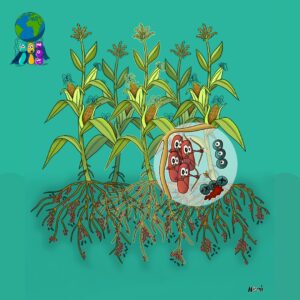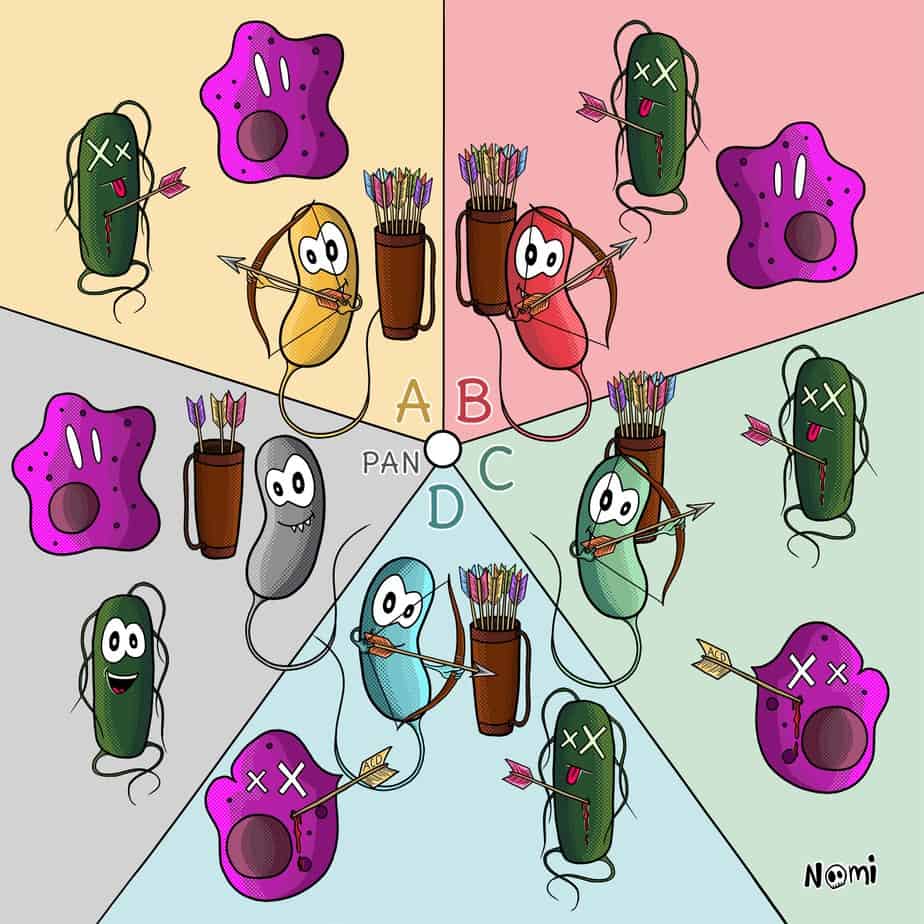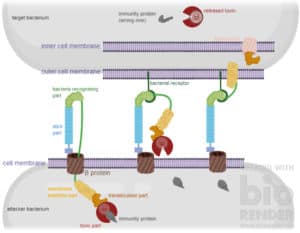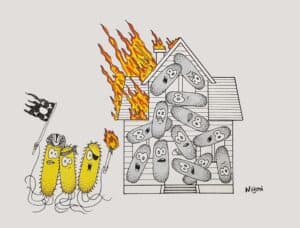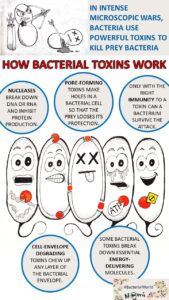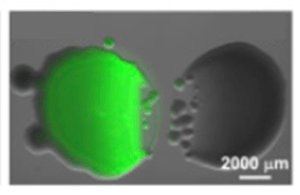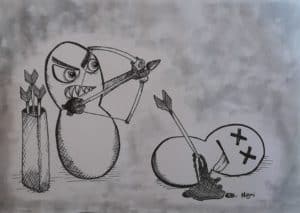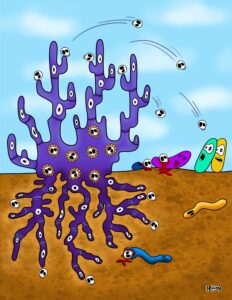A bacterium is constantly making decisions. Eat this food or that? Stay here or go away? Kill this foe or let it be?
Especially for the killing process, bacteria have a full arsenal of killer weapons at their disposal.
They can start a chemical war, burn their foes, roll over them or punch holes into them with a bow and arrow.
But each of these decisions comes with a price; they cost energy and resources.
Especially activating and shooting killer bows and arrows is incredibly costly for a bacterium.
So, before bacteria decide to kill, they need to take their whole environment into account.
Here, we will look at when bacteria activate and engage their nanoweapon, the type 6 secretion system.
A bacterial weapon to kill when needed
Bacteria have this incredibly efficient killer T6SS weapon that looks like a crossbow with arrows. They shoot these arrows together with toxins into their foes to kill them and get rid of them.
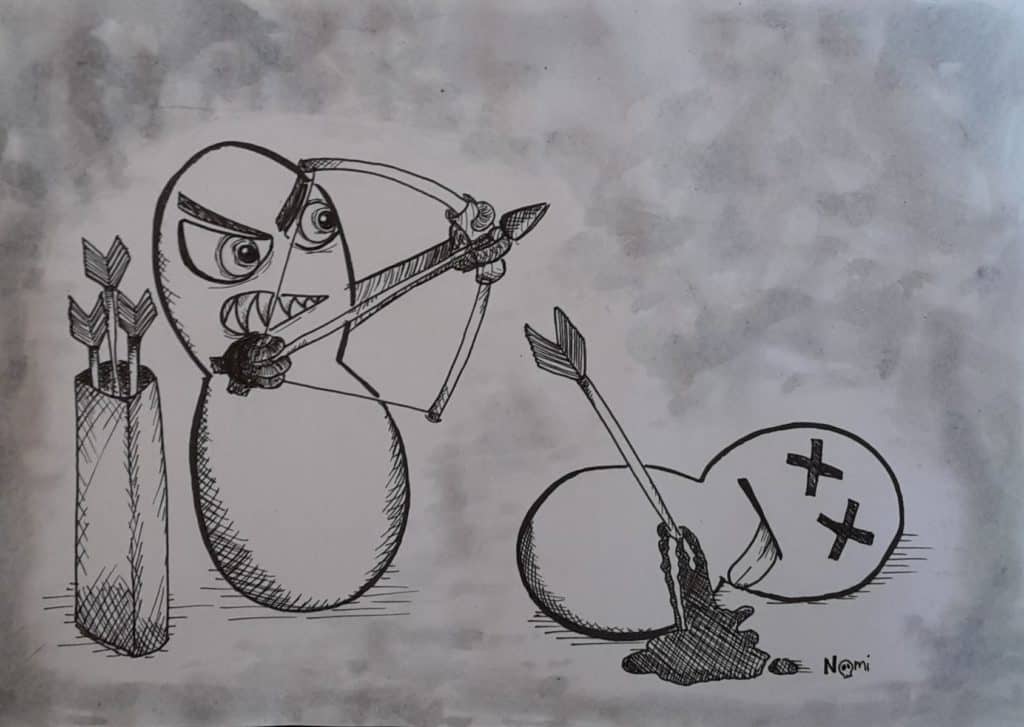
However, you can probably imagine that bacteria can’t just fire these arrows randomly all the time. Producing the machine as well as the arrows costs a lot of energy. Hence, bacteria need to make sure they only produce and fire this weapon when it is required. Or that they gain something out the kill – like when they protect their hosts from intruders. So, they need to decide well.
Two recent studies (here and here) looked at four different bacterial species from the Vibrio genus. They focused on these bacteria because they all have very similar bacterial nanoweapons but seem to use them differently.
Also, some bacteria from the Vibrio genus can cause diseases in us or marine animals. Hence, research focuses on these bacteria to better understand them.

Two proteins control the killer weapon
Generally, bacteria from the Vibrio genus use two proteins to control when to produce their T6SS weapons. We will call these two controllers protein X and protein Y.
Interestingly, in these species, protein Y also controls the motility of the bacterial cell. So, this protein regulates how active the bacterial rotor, the flagellum, is. If it’s rotating very fast, the bacterium can swim forward. If the rotor is quiet, the bacterium stands still.
On the other hand, protein X controls an activity called competence. Bacterial competence means that the bacterium produces a special machine on the cell surface. This machine picks up free DNA from the environment. Once a bacterium takes up external DNA, it can stitch the new DNA into its own DNA. Now, this bacterium has new “powers” depending on what the new DNA is for.
These two studies looked at the links between the two controller proteins and the killing machine. And what they found, helps us better understand the bacterial lifestyle and decision-making.
Bacteria decide to kill and steal DNA
One main focus of research is on the bacterium Vibrio cholerae. This pathogen lives on seafood and can cause extremely dangerous diarrhoea in us. This is why it is important for researchers to better understand how this bacterium lives and survives in water and in the environment.
In Vibrio cholerae, both proteins X and Y control the T6SS weapon. As soon as Vibrio cholerae killed a neighbouring bacterium, protein X activates the competence machine. Now, the bacterium can take up the DNA of the dead bacterium and integrate it into its own.
With this behaviour, Vibrio cholerae not only kills competitors but also evolves. After getting rid of a foe, it gets new DNA and thus new superpowers for challenging conditions.
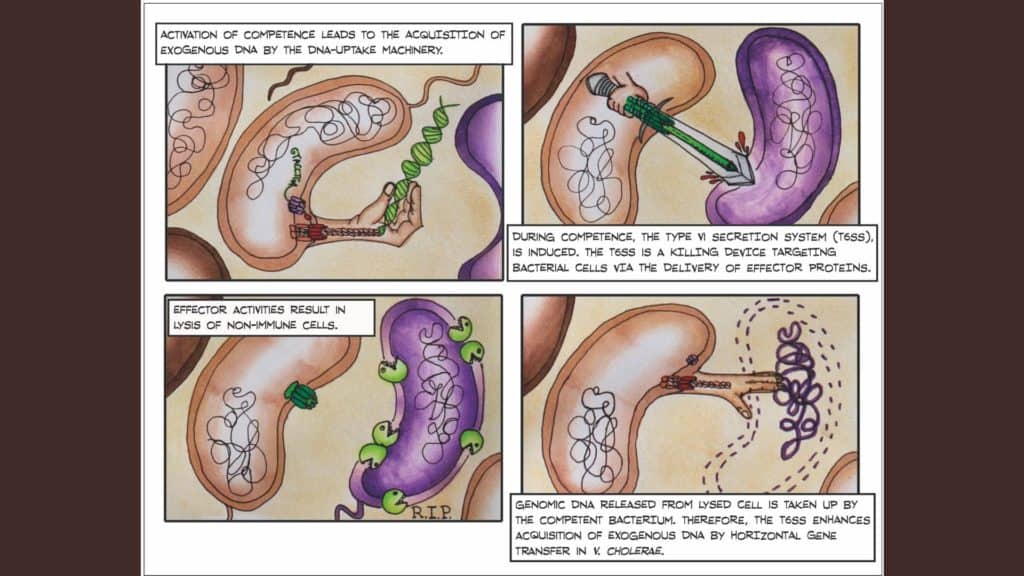
However, sometimes Vibrio cholerae realises it does not have a chance against its competitor. In this case, protein Y activates motility and the bacterium can swim away and escape the predator.
Bacteria decide: should I kill or should I go?
Then, both studies looked at whether the control of the T6SS weapon works similarly in other Vibrio species. They looked at these bacterial species:
- Vibrio parahaemolyticus, which causes diarrhoea and lives in seafood
- Vibrio fischeri, a squid symbiont
- Vibrio alginolyticus, another seafood-poisoning cause
All of these bacteria live in marine environments and can live in fish or seafood. Since they all cause some form of diarrhoea, researchers try to understand these bacteria better to inhibit the diarrhoea-causing mechanisms.
Both Vibrio parahaemolyticus and Vibrio alginolyticus have two T6SS weapons while Vibrio fischeri only has one. Interestingly, they are all active at different temperatures, so bacteria already control their killing activity depending on how warm or cold it is.
Also, proteins X and Y control each T6SS weapon completely differently in each bacterium. There is no pattern. None.
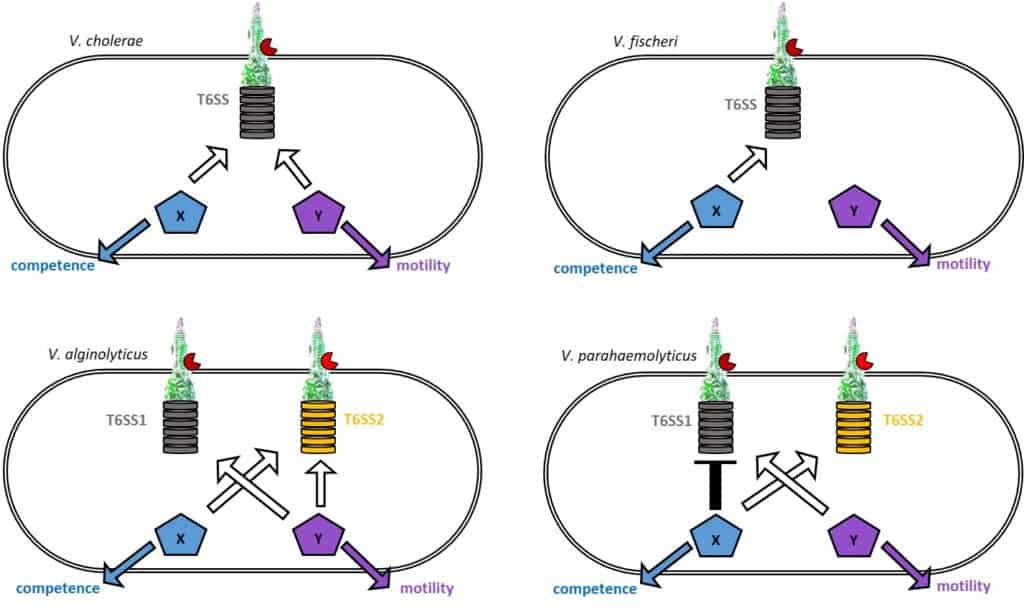
So, why would very similar proteins have completely different impacts on the T6SS weapons in different bacteria?
And does this mean bacteria decide differently about whether to kill or not?
There is currently no clear answer to this. So, my guess would be that it depends on the killing power of the T6SS weapon. Some T6SS weapons can kill other bacteria. Then it makes sense to activate the competence machinery at the same time. Like this, the attacker bacterium can also take up the dead bacterium’s DNA.
However, other T6SS weapons are supposed to kill higher species, like fungi or amoeba. But a bacterium could not use the DNA of such a species. In this situation, the competence machinery is not needed. Rather, motility would be more appropriate to escape this dangerous situation.
It remains mysterious around this T6SS killer machine and how bacteria decide to kill. Or not.


